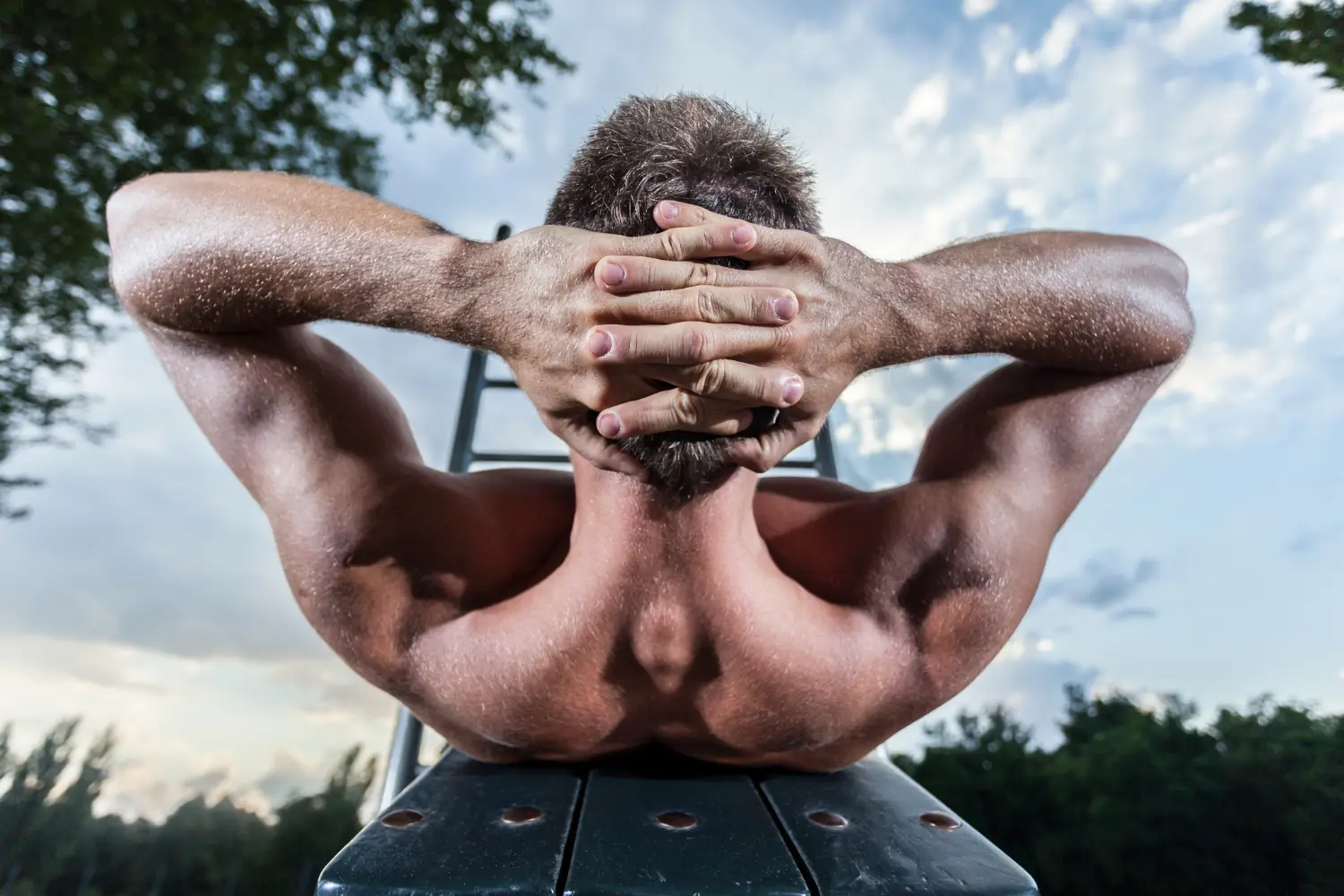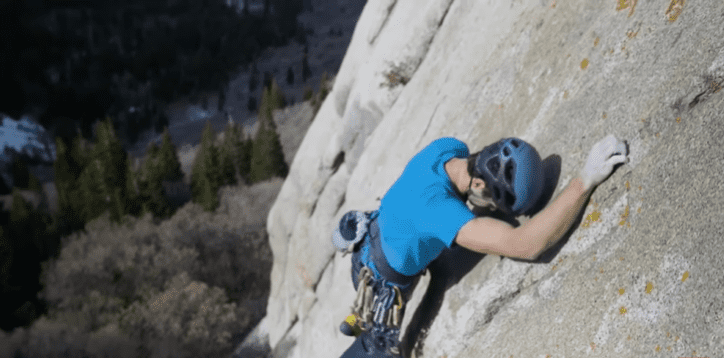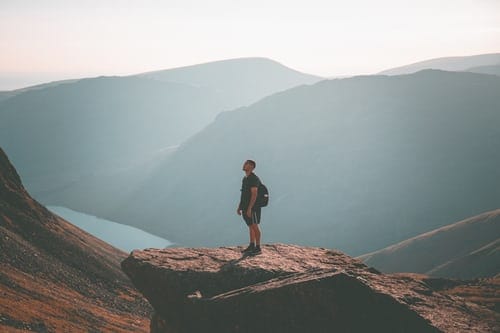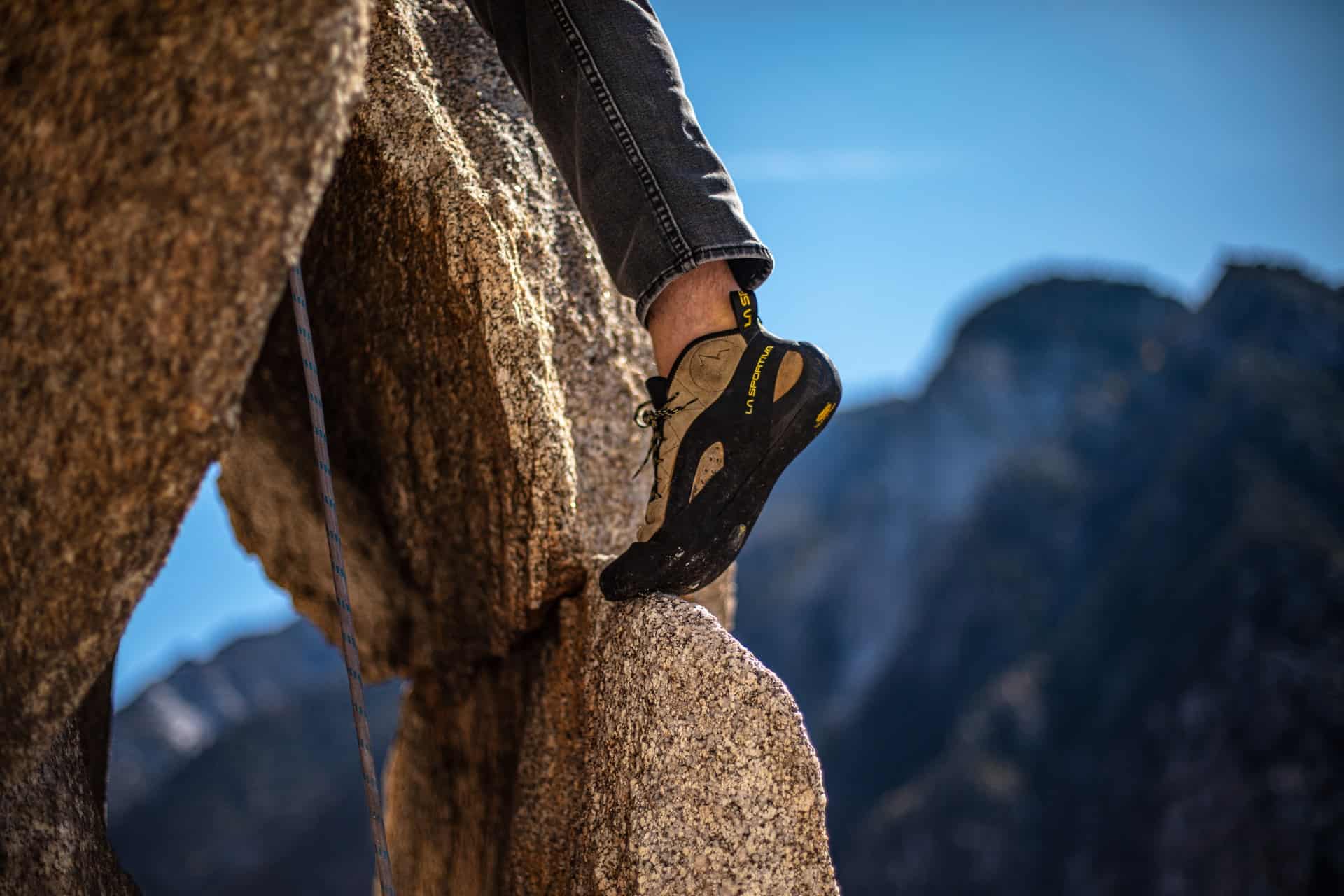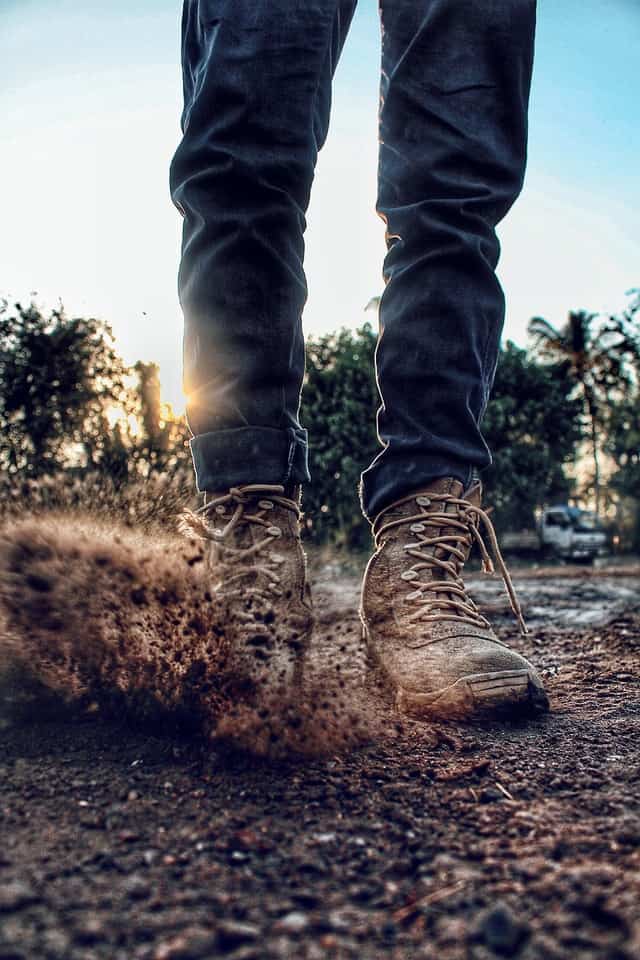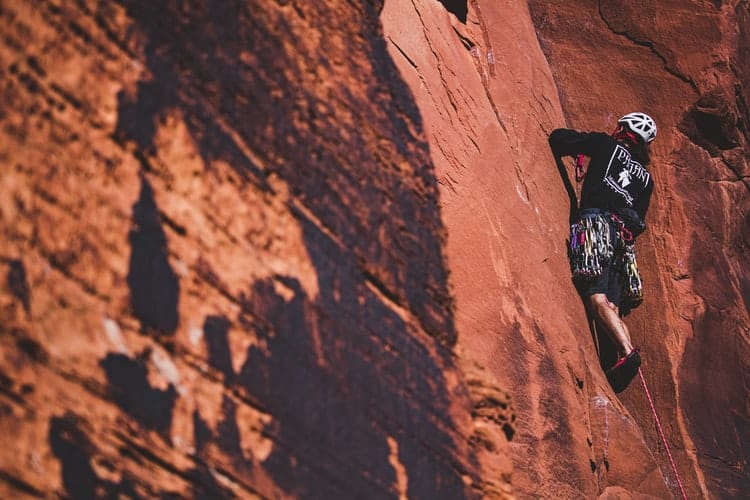At the time of buying climbing shoes, several doubts may arise. Within the climbing equipment, it is the most important and personal.
Climbing shoes are the only layer between your feet from the rock. They must transmit the sensations of the rock well while providing precision and good performance.
Every climber is anatomically different. Personal preferences vary based on your experience and goals. In addition, when starting out in climbing, it is common to ask more experienced colleagues and be influenced by them.
Do not get carried away by advertising or videos of the strongest climber. It is common for a climber to chain the project with particular climbing shoes. Then, for the video and photos, he wears the model of the brand that sponsors him.
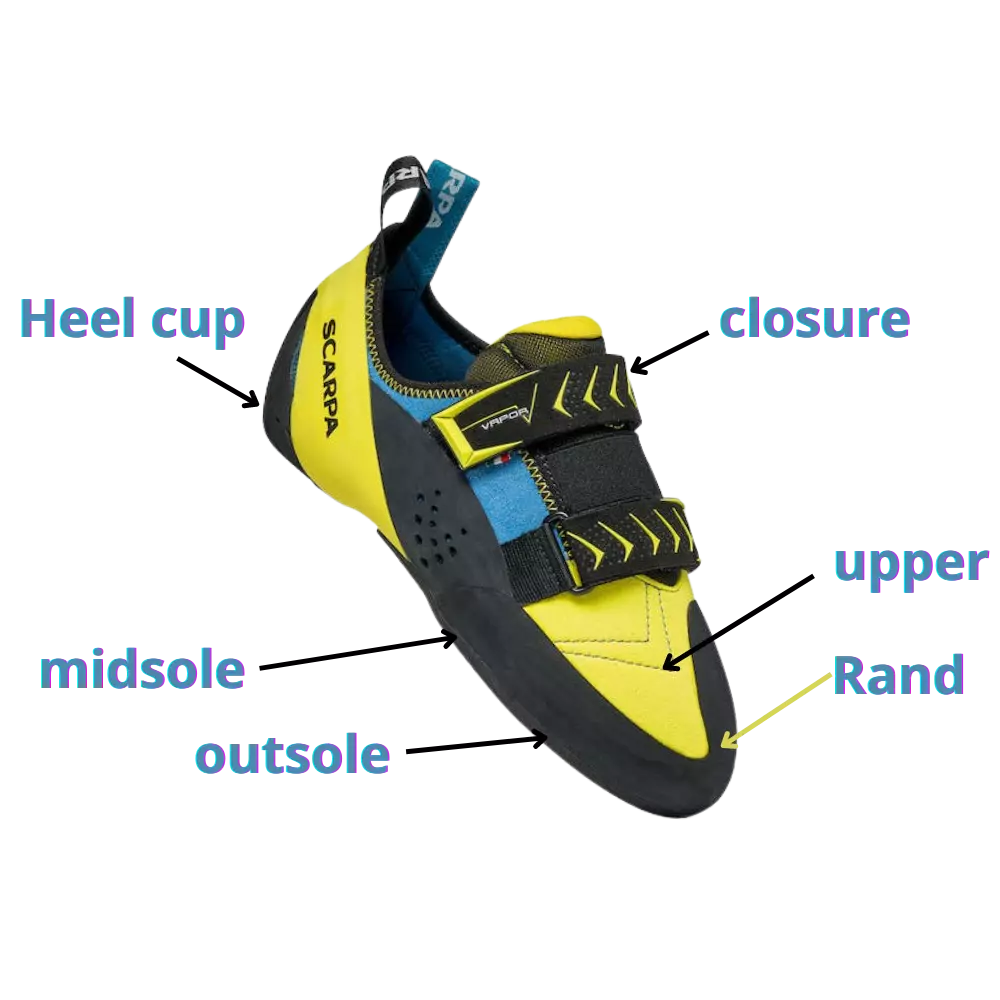
FOOT MORPHOLOGY
The shape of your feet is decisive when buying a model of climbing shoes. If you have a Greek foot and wear Egyptian -shaped climbing shoes, they will be uncomfortable for you. The footwear must adapt to the shape of the foot and not the other way around.
By choosing the right last for your foot, it feels like it fits like a sock. There are no empty spaces or foot slips inside. The fit is perfect.
You must be careful with the “experts” who advise on the Internet, videos, or magazines. These recommendations are usually based on the quality or performance of the climbing shoe, and the fundamental factor for choosing the climbing shoe is usually ignored: the shape of the foot.
Each brand develops its models depending on the type of climbing it is aimed at: some have an aggressive tip; others are more curved; others have little details and finishes for this or that. But the basis is to pay attention to the morphology of the foot you have, as this will save you a lot of pain and frustration while climbing.
In the morphology of the foot, some basic types can be observed:
GREEK FOOT
In Greek feet, the second toe is the longest. The big toe is the same length as the third toe, and the rest are smaller. For these types of feet, it is advisable to use shoes that facilitate the distribution of loads on the front part of the foot.
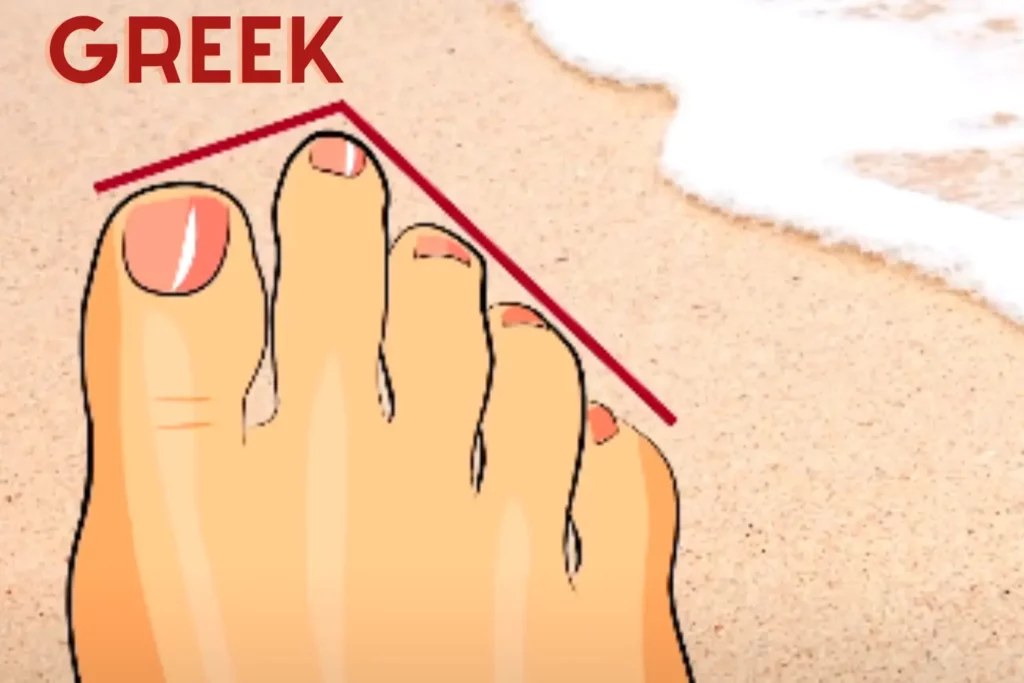
This type of foot is reflected in the statues of the pharaohs. The big toe is longer than the other toes, which follow in order of decreasing size. It is the most common.
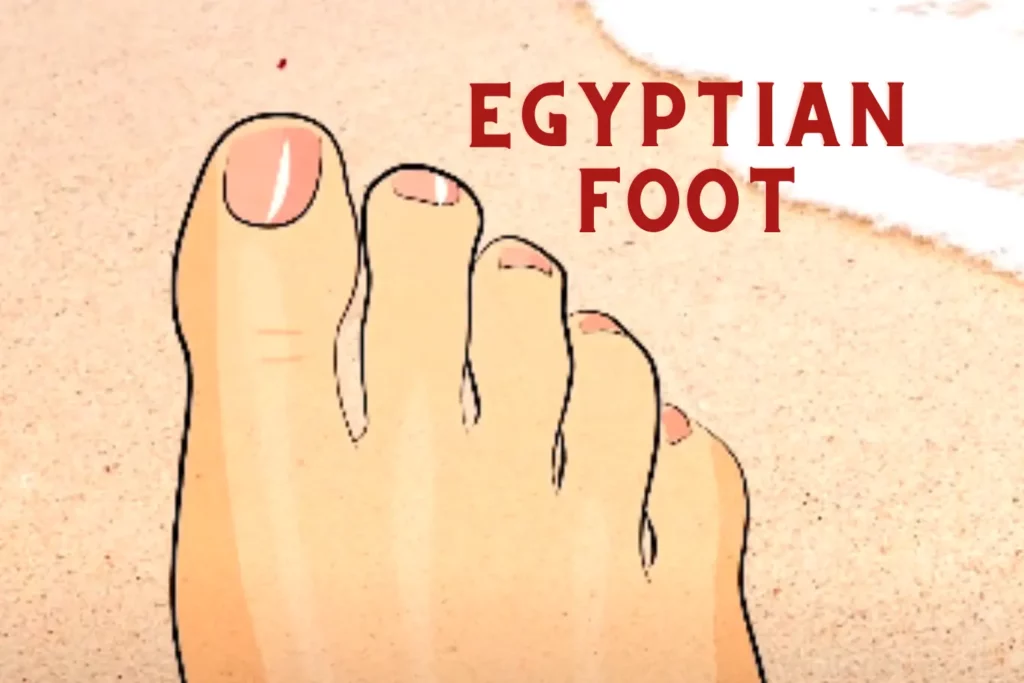
ROMAN OR SQUARE FOOT
This type of foot is known as Polynesian, square, or Roman. In this morphology all, the fingers are almost equal in length, being aligned with each other.
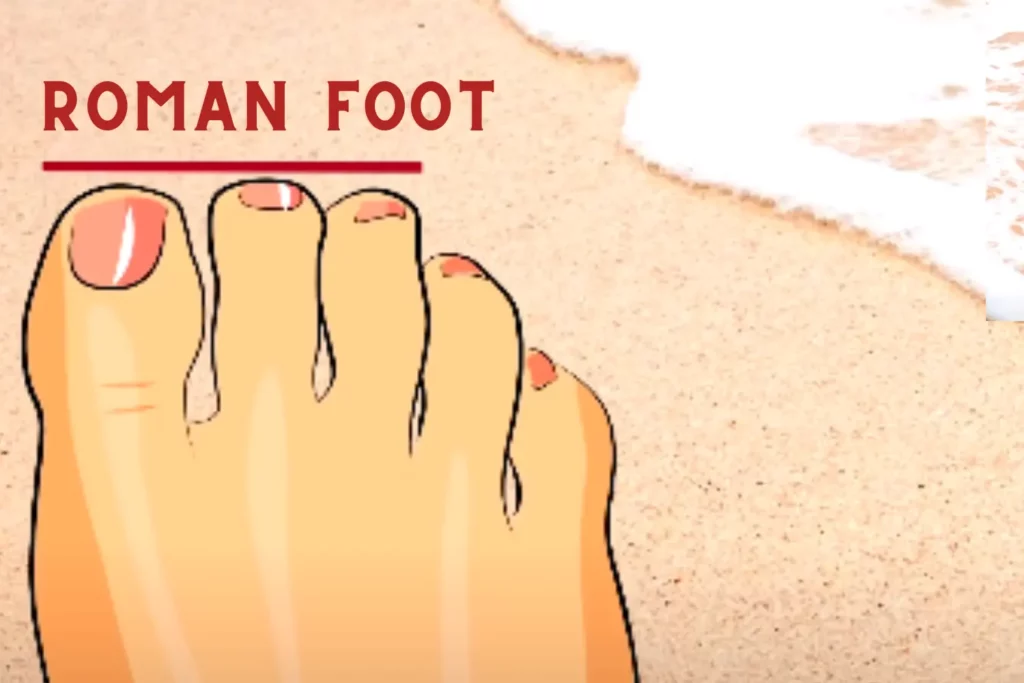
GERMAN FOOT
In the feet that correspond to this shape, the thumb protrudes while the rest of the fingers form a straight line in length.
CELTIC FOOT
Similar to the Greek, with the peculiarity that the two smallest fingers measure the same.
WIDE AND NARROW FEET
The width of your feet will be another piece of information to take into account when choosing a specific model. In fact, most brands classify their climbing shoes according to this parameter.
Brands do not usually have the classification in their catalogs according to the shape of the foot. In the case of La Sportiva, on their website, they indicate that the models with narrow lasts would be suitable for Egyptian feet and the wide ones for Greeks.
The Italian brand distinguishes between two main types of climbing shoes:
Some models from other brands that will be comfortable on wide feet are the Anasazi models, from Five ten; Joker, from Boreal; Shaman, from Evolv; and Vapor or Boostic, by Scarpa.
WE ALL HAVE UNEQUAL FEET
Another important issue that is difficult to solve is that it is common to have one foot larger than the other. The left one is usually the largest, although the opposite may occur. The ideal would be to be able to buy the footwear individually, and not in pairs.
You can try to find someone with the same foot shape and size but in reverse. That is, if your left foot is half a size (42 1/2) larger than your right (42), find someone with the opposite situation and exchange them. This is the case with some colleagues, but who knows how likely they are to find that person…
CLIMBING FOOT MODELS ACCORDING TO LAST
Buying climbing shoes online according to the shape of your foot is complicated. Most brands do not provide information on the correct foot shape or simplify it (such as La Sportiva). The only brand that informs about which foot shapes are suitable for each model is the Czech company OCUN.
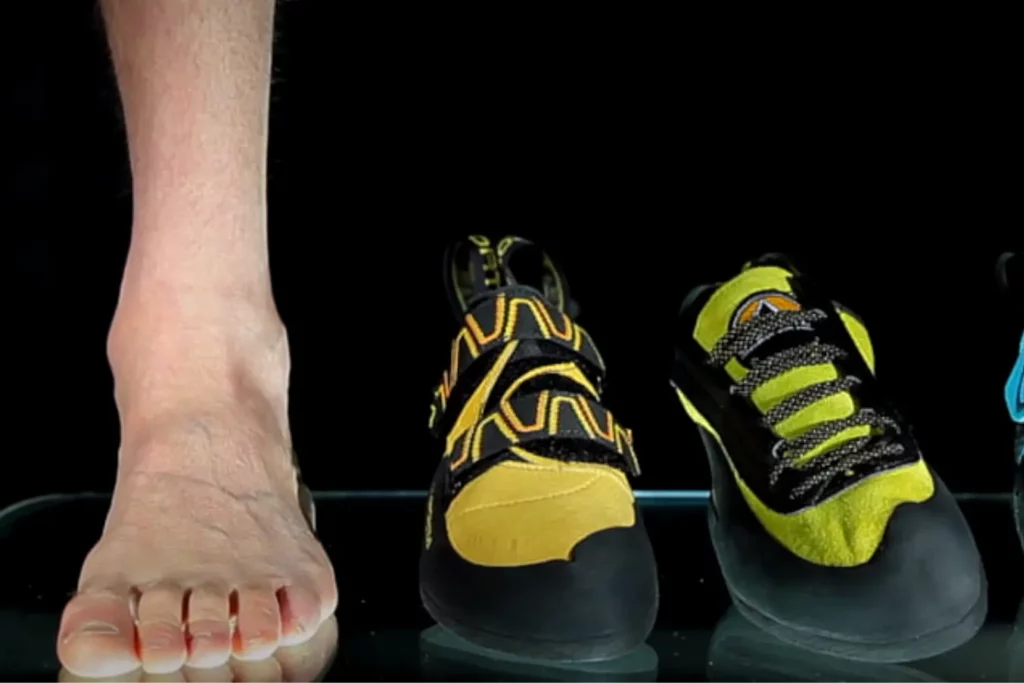
If you look at the descriptions, you will see how they indicate the preferred type of foot for each model: Crest for Greek feet, and Bullit or Havoc will adapt well to any shape thanks to their rounded toe. In addition, this brand also stands out for being very comfortable for climbers with wide feet.
To give other examples, I have approached the nearest store to evaluate the models they have there:
Among these La Sportiva models:
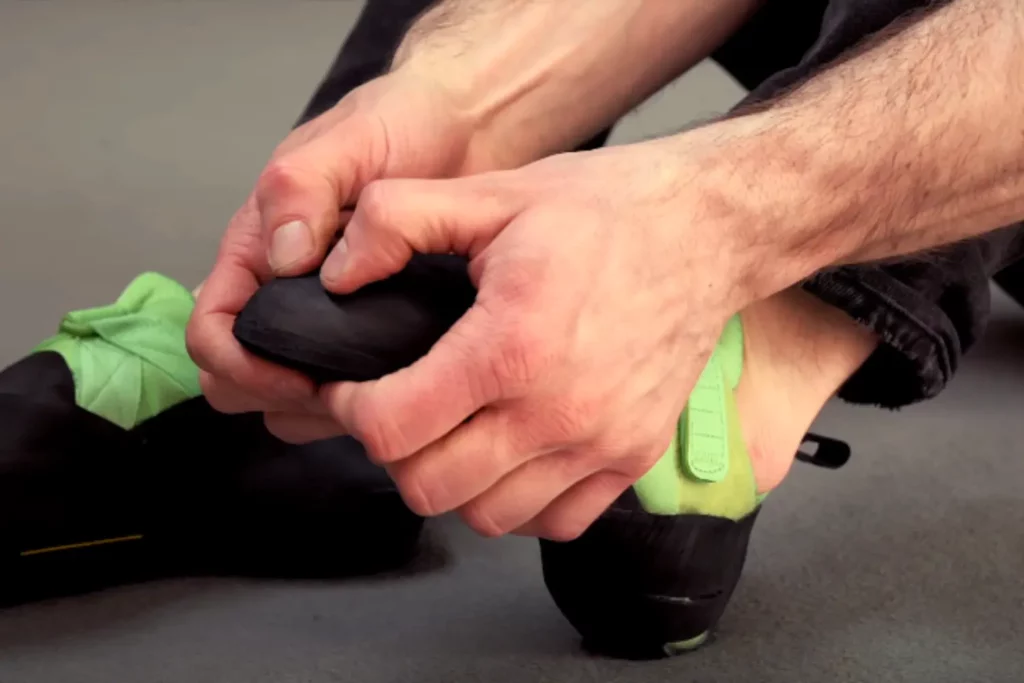
Among these 5.10 models:
Other brands:
THE HEEL OF THE CLIMBING FEET
If it was already difficult to find the model that adapts well to the shape of your feet, the width, and its unequal size, then another variable comes into play that complicates it even more: the heel.
In the different models, there is a great variety of shapes and technologies applied to the heels. They can be more or less pronounced, wide or narrow, rigid or soft, covered with more or less rubber, smooth or with irregular shapes… There is something for all tastes and purposes.
Generally, a large, rounded heel will be better when heeling into the grip and over blunt holds. For strips, you will need a narrower heel.
When you try them on, make sure that they are stuffed, without air inside, and well adjusted (that they do not come out in a heel). Another important issue is that it does not hurt you from chafing.
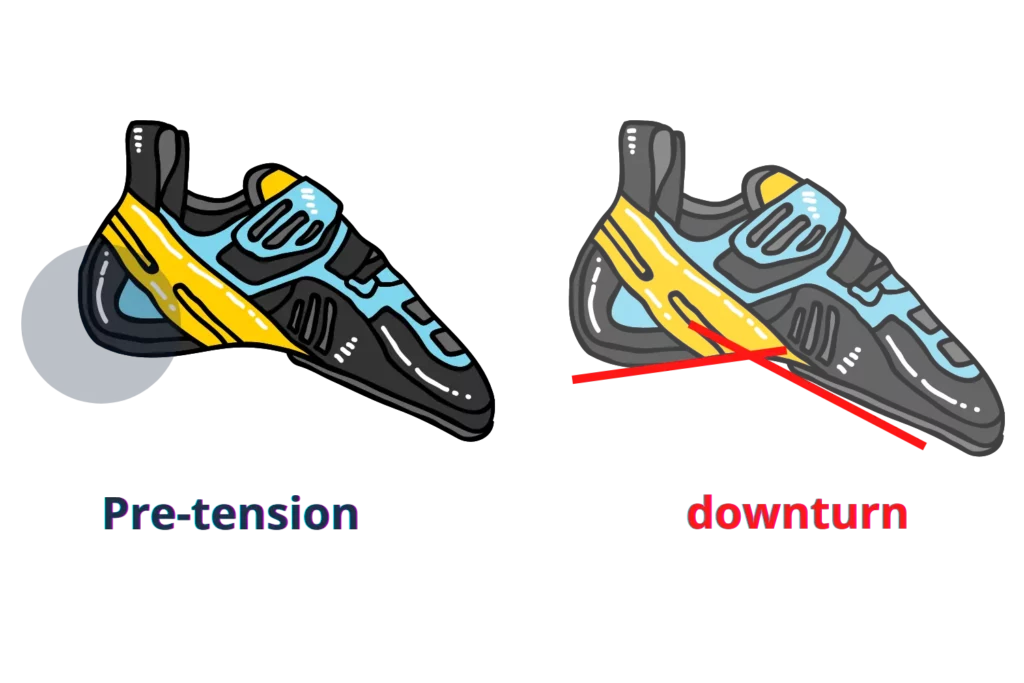
TYPE OF CLOSURE: VELCRO OR LACES
Surely, along with how beautiful they are, it is the least relevant aspect. Velcro is supposed to be the most comfortable for bouldering, as it is quicker to put on and take off between hits. The models with laces are usually intended for climbing long routes. They fit more and are usually more comfortable.
There are also dancers. If you find the right model and size, they fit like a second skin and offer, in addition to comfort, excellent performance.
Among the models on the market, the lacing system of the La Sportiva model, Mythos, stands out. This peculiar system makes that, at the same time that you adjust the width, you are coupling the heel part. This characterizes it for its comfort and versatility.
In principle, the type of closure does not determine whether a climbing shoe is better or worse. When you find the model that suits you, it will not be what determines your choice. Although it is true that the laces allow a greater range of adjustment for wide feet.
SOFT OR RIGID INSOLES AND MIDSOLE
The insoles and midsoles are part of the structure of the footwear. Depending on the stiffness and thickness, they will allow the climbing shoe to adapt to the shape you step on or remain undeformable. It is one of the most determining factors when buying one model or another.
SOFT CLIMBING FEET
Soft clibing feet usually have a very thin midsole, or not at all (like Theory). This allows them to adapt to the shape of the surfaces they step on, transmitting valuable sensory information to the climber.
They are models to step on with a large part of the sole, applying force in a multidirectional way. They usually have a large part of the surface covered in rubber allowing great freedom of movement (insteps, heels …).
To take advantage of them and prevent them from giving way when edging, shoe models with soft soles must be adjusted. As a result, the pressure borne by the ankles and toes is also greater.
They are the most common in bouldering, both in rock and resin. In sport, climbing will depend on the climber’s preferences and the qualities of the route. Requiring greater involvement of the foot and calf muscles, they are less common in big wall climbing and multi-pitch routes.
RIGID CLIMBING FEE
Rigid climbing shoes are less deformable. This makes them suitable for climbing on rails and small feet. This rigidity allows the calves, soleus, and feet to rest from the continuous load of body weight. But, at the same time, apply force while wearing a comfortable size. They are best suited for beginner models or for multi-pitch escalations.
Although the cost of that comfort is less sensitive.
SOFT AND HARD SOLES AND RUBBER
The rubber of the climbing shoes is an important factor to opt for one or another model. However, there are those who choose the model based on the shape and stiffness and change the rubber now of resoling.
Most climbing shoes have soles between 3.5-4 mm. There are hard and soft ones, with more or less adherence, resulting in more or less durability.
RIGID OR HARD SOLES
The models with harder soles are intended for climbing vertical plates on tiny rails and ridges. They are also suitable for training in the climbing wall.
They are best suited for climbers capable of applying more force with their feet. In the case of light climbers, it will be common for them to slip off certain holds due to a lack of friction.
SOFT SOLES
Softer soles are a great help for light or short climbers. They are designed for overhangs, roofs, and ridges, but also for bouldering on volumes or blunt and flat holds and grip routes. Their sensitivity and friction are essential factors.
In these climbs, you step on a large part of the sole, and you need the climbing shoe to deform to adapt to the rock. In addition, in crashes, the force applied by the legs is less, so a greater grip will be of great help.
They are also essential for climbing lying grip plates. There, a larger size will allow you to step on a larger surface.
THE INDIVIDUAL CLIMBER FACTOR
Something that is not usually taken into account is the force that the climber is capable of applying with his legs. Here it is decisive, in addition to the strength of the legs and the ability to maintain tension in the core, the weight of the climber. A light climber will have a hard time getting friction out of a hard sole.
For this reason, there are male and female models. In these, the biggest difference is usually the rubber (in some cases also the shape). Climbers who are able to apply more force to their lower body may benefit from using a stiffer rubber.
SOFT OR HARD RUBBER ACCORDING TO CLIMBING AND LEVEL
If you are just starting out, it is better to use somewhat stiffer climbing shoes. They will help you strengthen the muscles in your legs and feet as you progress. To start with, lack of technique causes rapid wear, and sensitivity still won’t be an issue. Therefore, opt for a durable rubber.
The climbing style also plays a role. Depending on the verticality of the wall:
Depending on whether you fit one or the other climbing shoe, you will climb in one way or another. The most common is to have several models. Depending on the style of climbing to develop, the type of rock, or the route, in particular, you will use the most appropriate.
In some extreme cases, one model can be carried on each foot. Like Adam Ondra when he chained Change 9b+. The Czech climber explained that he chose to put the Solution on his right foot because it gave him a better push on homogeneous and well-defined holds in crashes. On his left foot, he simply preferred to wear the Futura model.
SHAPE OF THE SOLE: ASYMMETRY AND AGGRESSIVENESS
The shape of the sole responds to a series of parameters that make climbing shoes more or less technical or aggressive. The forms that they usually present do not correspond to the nature of the foot.
The more aggressive models are intended for performance, which leads to a loss of comfort. They are models for bouldering and certain sports routes and are not usually designed for training or multi-pitch routes. For those options, you’ll appreciate a little more comfort.
LAST ASYMMETRY
You have probably heard of more or less “aggressive” climbing shoes. This term refers to the degree of asymmetry that the shoe last presents and the curvature of the sole.
Its less precision on small edges is something that only experienced climbers will appreciate.
They are more uncomfortable than symmetrical models. They are indicated for medium and advanced climbers on difficult routes or blocks, with more technical footholds or with greater wall collapse. They must be worn well adjusted in order to take advantage of all their qualities.
FLAT OR CURVED SOLES (ARCH)
They are also not intended for most training sessions. In the climbing wall, the normal thing will be to opt for a more comfortable way (or some old ones, aggressively, but that have lost it due to using).
At this point, it would be necessary to differentiate between the curve that goes from the tip of the foot to the middle of the sole, and the one that marks the heel. Both participate independently, and that a climbing shoe is aggressive does not mean that it has a more pronounced heel (and vice versa).
The P3 system, developed by La Sportiva, should be highlighted here. This technology allows you to step on the sole of the foot, bending it in its natural way, but without the shoe losing its shape due to accumulated use. It is present in most of their models, such as Python, Testarossa, or Theory.
SYNTHETIC OR LEATHER MATERIAL
The manufacturing material is important, above all, when choosing the size. Leather or leather climbing shoes generally yield much more than synthetic ones.
If you choose a leather model, you should buy them a little tighter. That way, when they widen, they won’t be too big for you. By yielding and enlarging, they will conform to the shape of the foot. The cost in return will be the suffering in the first uses.
In addition, synthetic fabrics in contact with sweat smell worse than natural fabrics.
European brands such as La Sportiva, Boreal, or Tenaya generally use natural materials. American brands, such as 5.10, use synthetic fabrics. This does not affect the performance of the climbing shoes, but it does affect their durability.
Another reason to buy climbing shoes made of synthetic material is the ideal ones. Such will be the case for vegan climbers.
TYPE AND LEVEL OF CLIMBING
Obviously, your level of climbing influences when deciding to buy a climbing shoe. But the type of climbing you are going to do is more important.
As a general rule, if you are starting out, it is better to opt for comfortable and versatile footwear, rather than one with too technical or specific characteristics.
A model with a rather flat sole, rigid and not very thin, will give you more support and performance while your ankles and fingers get stronger, and while you develop precision in your foot technique. Also, keep in mind that your first few pairs will be smashed by wall shuffling.
The most technical climbing shoes usually have an asymmetric last, which shifts the weight of the body inwards. These require good foot technique, which takes time to acquire.
In addition, displacing the force on the tip of the big toe can cause injuries and deformed feet. Comfortable climbing shoes with a symmetrical last will be the best choice to start with. Your feet are a sophisticated work of engineering.
CLIMBING SHOES PRICE
Price is another important factor when buying climbing shoes. If what you want is simply to try climbing, and you don’t have a colleague who will lend you some, you can rent them at most climbing walls.
Once you are encouraged to continue climbing, it is best to buy cheap climbing shoes. Your initial progression will depend more on your motivation, training, and frequency with which you climb, than on the material or footwear you use (below you have some recommended models).
After many hours of rock, your feet will begin to squeeze all the possibilities offered by the different technical characteristics that the climbing shoes present.
If your level is advanced, it will depend on the use you are going to give it. The normal thing is to take two pairs to the rock: cheap or old ones to warm up, and top-of-the-range ones to squeeze and climb on projects.
If you take care of them, taking them to rest before they get bored, they will last you for years. Even if you got the size right, they will be more comfortable after the first resole, already adapted to the shape of the foot and with the most suitable rubber (be it the original or another). Look for official shoe repair shops, as they will have the exact molds and soles for each model.
Also, in those critical moments when you find yourself above the last insurance and depending on a critical foot, you will want to have the footwear that gives you the greatest confidence and security. So, think about it before choosing such a model to save you a few dollars.
A LOT OF TECHNOLOGY AND SCIENCE IN ONE FOOTWEAR
In this aspect, some brands may seem expensive at first. But in the case of La Sportiva, the R&D work that it carries out stands out, together with its history at the forefront of innovation in the design of climbing footwear (for the record, it does not sponsor me).
In addition, they have as ambassadors some of the best climbers (Adam Ondra, Patxi Usobiaga, Tommy Caldwell, Angela Eiter, Jakob Schubert, Jonathan Siegrist, Margo Hayes,….) who, in addition to climbing the hardest routes with their models, cooperate with the brand giving feedback on how to improve them or ideas to create new ones. It is not surprising that the Italian brand continues to occupy a dominant position after so many years.
Therefore, it would be necessary to differentiate between an expensive and a high-priced product. Since many of them are worth it.
SIZE OF THE CLIMBING FEET
Be careful when choosing the size of the climbing shoe. Not all brands of climbing shoes have the same size. While in some you have to reduce a lot (La Sportiva), in others it is advisable to buy the same number that you use in your street shoes (Five ten).
There is also no exact rule regarding how tight you should wear them. The important thing is that there are no empty spaces, filling it as much as possible and that it does not bend or give way when edging. Performance gains are inversely proportional to comfort up to a point. So the pain is such that it becomes impossible to scale efficiently.
Care should be taken in the case of children and adolescents. The trainer of the young climbers should inform them of the danger of shoes that are too tight and asymmetrical.
CHOOSING THE SIZE OF THE CLIMBING SHOES
The important thing is that there are no empty spaces and that it does not bend or give way when edging.
Don’t get carried away by what the colleague tells you who wears four sizes smaller. A very tight shoe is useless if, instead of thinking about chaining, you want to go down and take them off. As I have indicated before, there is no general rule. Even the same model may require two different sizes depending on whether you use it to climb grip lying plates (larger so that the foot can adapt) or collapsed plates (tighter for greater precision).
If you are just starting out, it is not so important to wear excessively tight jacks. However, some models have to be “suffered” to squeeze more performance out of them. If it is finished in leather, it will yield more than, if it is made of synthetic fabrics.
Technical models are usually quite tight in their number, so ordering a smaller size is not recommended. But for soft shoes, yes you should choose a tighter size.
In these shoes, it is normal for the toes to be flexed. If you’re not used to it, it might seem weird. But that’s how they are designed and it doesn’t mean you should buy a larger size.
Normal will be:
Regardless of which you choose, be consistent with the size. Injuries to the feet of climbers are becoming more common. By choosing the right size, you will avoid foot problems and injuries caused by wearing them tight, such as swelling, calluses, toe deformity, plantar fasciitis, ingrown toenails…
HOW TO TRY ON CLIMBING CLIMBERS
When trying on some climbing shoes, you must take into account a series of factors:
CLIMBING FEET FOR INITIATION
On some climbing walls, it is possible to rent climbing shoes for the session. However, these models have already gone through so many different feet that they lack form. In addition to that, they are usually the most resistant models on the market, which goes against performance.
Being shared, you will use them with socks. Climbing shoes are footwear designed to be worn without socks. The interiors are designed and cared for this use. Thus, communication with the outside is more precise. That is, you will feel what you step on while you get a better fit.
Summarizing what I’ve read so far, a suitable shoe to start climbing should be a comfortable model. At this time, it does not make sense to acquire technical or aggressive models since they will not benefit from them; and, in addition, that discomfort can end up causing rejection by the climber.
Therefore, choose a flat, symmetrical, rounded-toe design. The more rigid sole will allow you not to have to tighten the size so much, enjoying greater comfort. At the same time, it will protect the intrinsic structures of the foot, which have yet to develop and adapt to the activity of climbing.
All brands have models that meet these requirements, such as the La Sportiva all-around range: Kubo, Finale, Zenit, Tarantula, and Katana belong to this line.
Some models of other brands suitable to start on the scale are Momentum, by Black Diamond; Neo, from EB; White, from 5.10; Steam, by Scarpa; or Mutant, from Boreal.
Keep in mind that due to the lack of precision in the foot technique, you will usually quickly destroy your first pair of climbing shoes.
FEMALE AND LV CLIMBING MODELS
There are a number of models on the market for the female audience. The biggest difference with the other models is that both the structure and the rubber used are usually softer. This allows them to fit with a lighter weight.
But this does not mean that these models are exclusive to the female gender. Some climbers who are short, light, or simply better suited to the shape of the last, will enjoy using these models. And equal to the inverse; there are many climbers who opt for the supposedly masculine model.
Models marked with Lv mean “low volume”. They are models that respond to these characteristics without referring to the sex of the climber in their nomenclature.
Some fairly common examples are the Miura Women, Miura vs Women, Anasazi Lv, or Anasazi Pro Lv.
CHILDREN’S FOOTWEAR FOR CLIMBING
For a child, it is very important that the shoes do not interfere with the natural development of their feet.
When a child begins to climb it is very important that the footwear they wear does not interfere with the natural development of their feet while allowing maximum freedom of movement.
The Gripit model, from La Sportiva, is designed for the little ones. The Zero-Press™ Construction last has been designed to eliminate pressure points in the growth plate areas of the foot and over the ball of the foot. In addition, a soft sole coupled with no-edge technology will allow you to develop your proprioception.
Other models suitable for children are the Mad Monkey, from Mad Rock; the Ninja Junior, from Boreal; Crocy, from Red Chili; the Simond Rock or the Stickit, from La Sportiva.
Once this stage is over, a model like Maverick will be the next logical step. Any of those mentioned for beginners will also work.
FINAL WORDS
For long routes, choose a comfortable climbing shoe. For bouldering a more aggressive and precise one. In sports, it will depend on the level, style of climbing, and rock.
The main thing when buying climbing shoes is that they fit snugly. Although they will mold to your foot with use, it is important to find the right shape. The footwear must adapt to your foot, and not the other way around.
You are going to climb with your climbing feet. They are for you and your feet, “unique and different”, are the ones that will suffer. Therefore, I advise you to try different models until you find the right one.
This is the advantage of physical stores compared to buying online. I would only recommend buying a model online that you have already tried on before. Although it is true that websites like Amazon have great return service, buying from a small neighborhood merchant has a social function.
I hope this information is helpful when choosing the right climbing shoe, as there is no definitive model or brand for all climbers.


